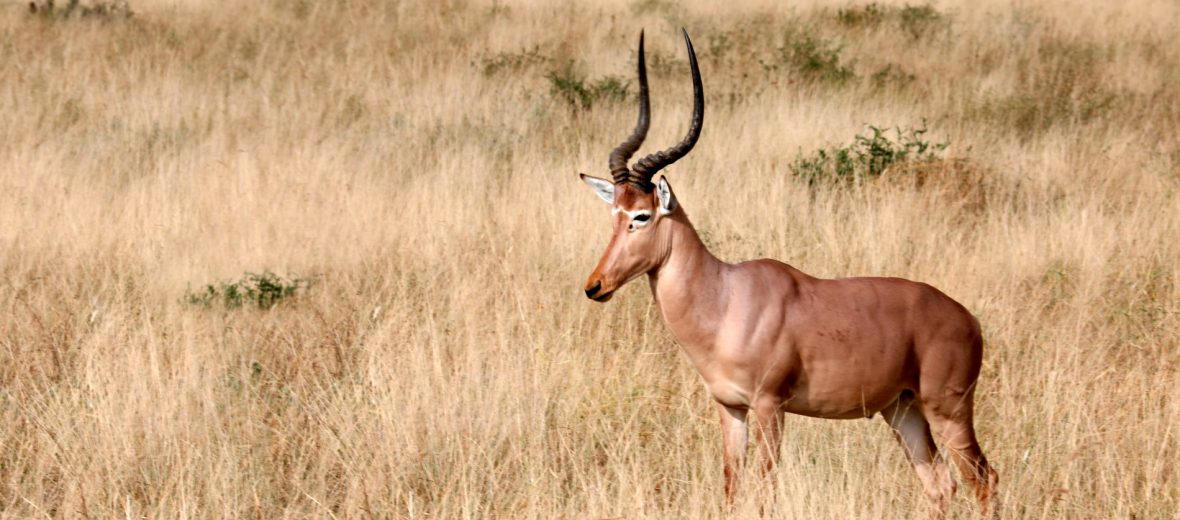
The hirola, aka hunter’s antelope or hunter’s hartebeest, hails from the borders of Kenya and Somalia. They prefer flooded open grassland with a smattering of bushes, scattered trees, wooded savannas with short shrubs, and they favor sandy soil. Due to habitat loss at the hands of farming and ranching; hunting; trapping; war; civil unrest; invasive species (and with them diseases like rinderpest); and climate change, causing severe droughts, these creatures are listed as Critically Endangered by the IUCN. As of 2016, there were barely an estimated 250 wild individuals remaining; and those numbers are decreasing.
First the Stats…
Scientific name: Beatragus hunteri
Weight: Up to 170 lbs.
Length: Up to 5.2 feet
Height: Up to 49.21 inches
Lifespan: Up to 15 years
Now on to the Facts!
1.) Due to their dark sub-orbital glands, which are used for marking territories, these critters are sometimes referred to as four-eyed antelopes.
2.) These critters are predominantly crepuscular (active at dawn and dusk).
3.) Being social, they can be found in small groups of up to 40 individuals.
4.) A group of hirola are called a herd.
5.) Herds consist of females, their offspring, and a single male.
But wait, there’s more on the hirola!
6.) During the wet season, herds can contain up to 100+ individuals.
7.) Adult males tend to be territorial and aggressive towards other males.
Did you know…?
Getting most of their needed moisture from the plants they eat, these creatures can go long periods of time without drinking standing water.
8.) Territories are marked with sub-orbital gland secretions, dung, scraping the ground with their hooves, and thrashing vegetation with their horns.
9.) Hirola herds can sometimes be intermixed with herds of other animals, such as Grant’s gazelles, oryx, zebras, and, topi.
10.) They avoid buffalo, elephants, and hartebeests.
But wait, there’s still more on the hirola!
11.) These critters graze on various grasses.
12.) The hirola is polygynous (1 male mates with multiple females in a harem).
13.) Females undergo up to a 7.5 month gestation (pregnancy) that yields a single calf.
14.) Calves are born precocial (self sufficient) and can walk and even run soon after birth.
15.) African wild dogs, cheetahs, lions, and humans all prey on hirola.
Now a Short Hirola Video!
Be sure to share & comment below! Also, check out the Critter Science YouTube channel. Videos added regularly!
Want to suggest a critter for me to write about? Let me know here.
Some source material acquired from:



